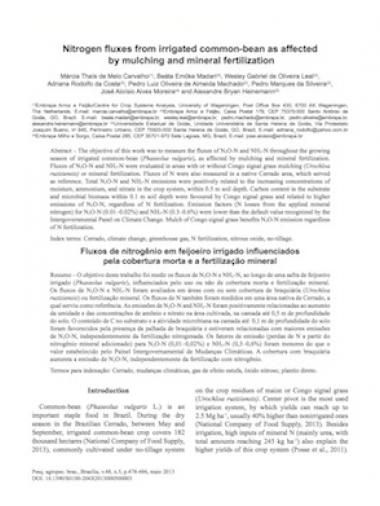Nitrogen fluxes from irrigated common‑bean as affected by mulching and mineral fertilization

The objective of this work was to measure the fluxes of N2O‑N and NH3‑N throughout the growing season of irrigated common‑bean (Phaseolus vulgaris), as affected by mulching and mineral fertilization. Fluxes of N2O‑N and NH3‑N were evaluated in areas with or without Congo signal grass mulching (Urochloa ruziziensis) or mineral fertilization. Fluxes of N were also measured in a native Cerrado area, which served as reference. Total N2O‑N and NH3‑N emissions were positively related to the increasing concentrations of moisture, ammonium, and nitrate in the crop system, within 0.5 m soil depth. Carbon content in the substrate and microbial biomass within 0.1 m soil depth were favoured by Congo signal grass and related to higher emissions of N2O‑N, regardless of N fertilization. Emission factors (N losses from the applied mineral nitrogen) for N2O‑N (0.01–0.02%) and NH3‑N (0.3–0.6%) were lower than the default value recognized by the Intergovernmental Panel on Climate Change. Mulch of Congo signal grass benefits N2O‑N emission regardless of N fertilization.
Citación
Carvalho MTM, Madari BE, Leal WGO, Costa AR, Machado PLOA, Silveira PM, Moreira JAA, Heinemann AB. 2013. Nitrogen fluxes from irrigated common‑bean as affected by mulching and mineral fertilization. Pesquisa Agropecuária Brasileira 48(5): 478-486.